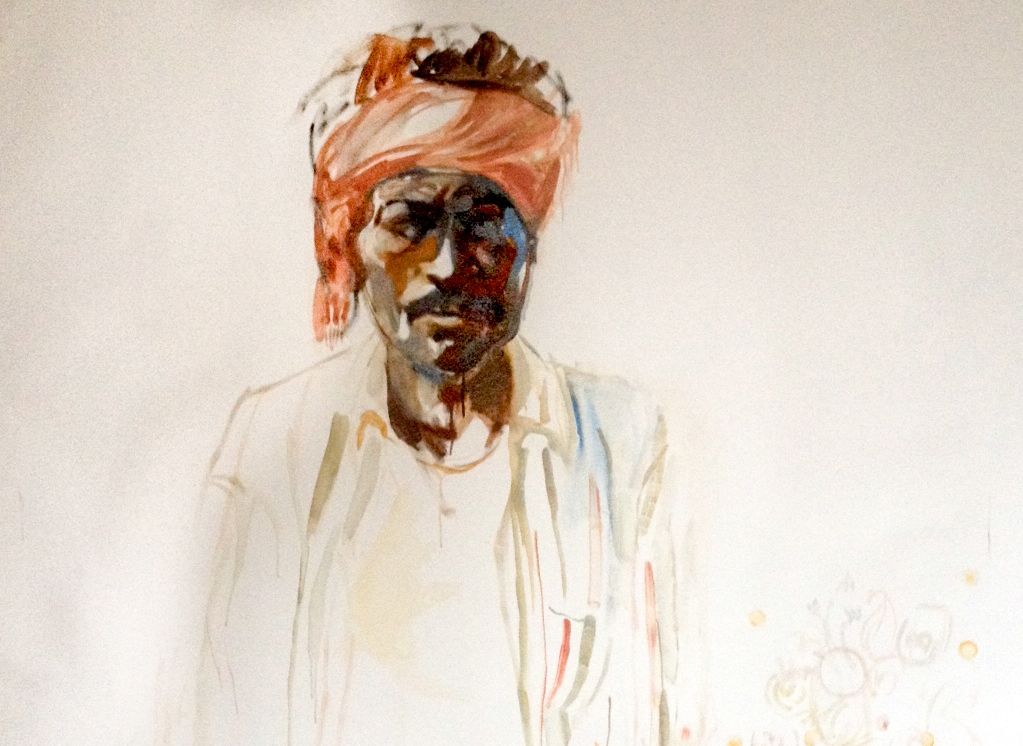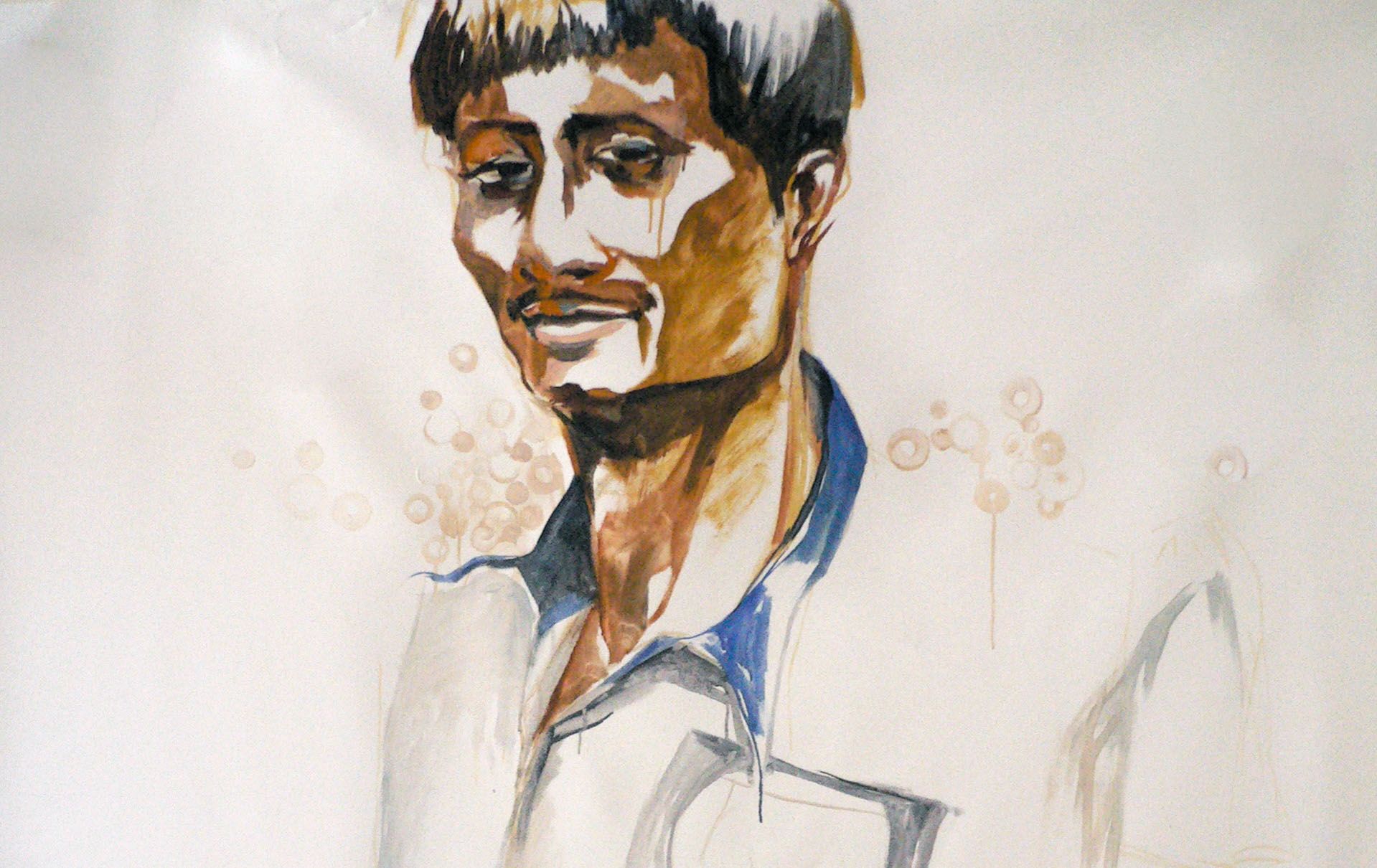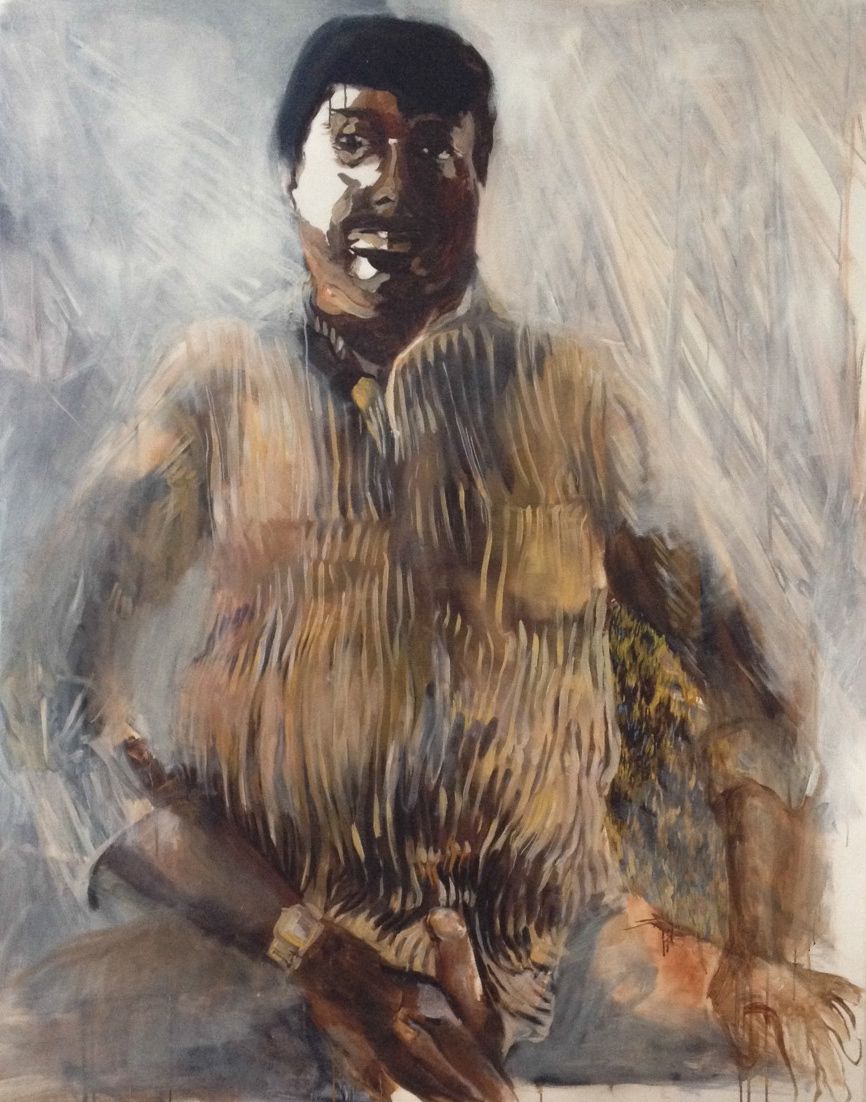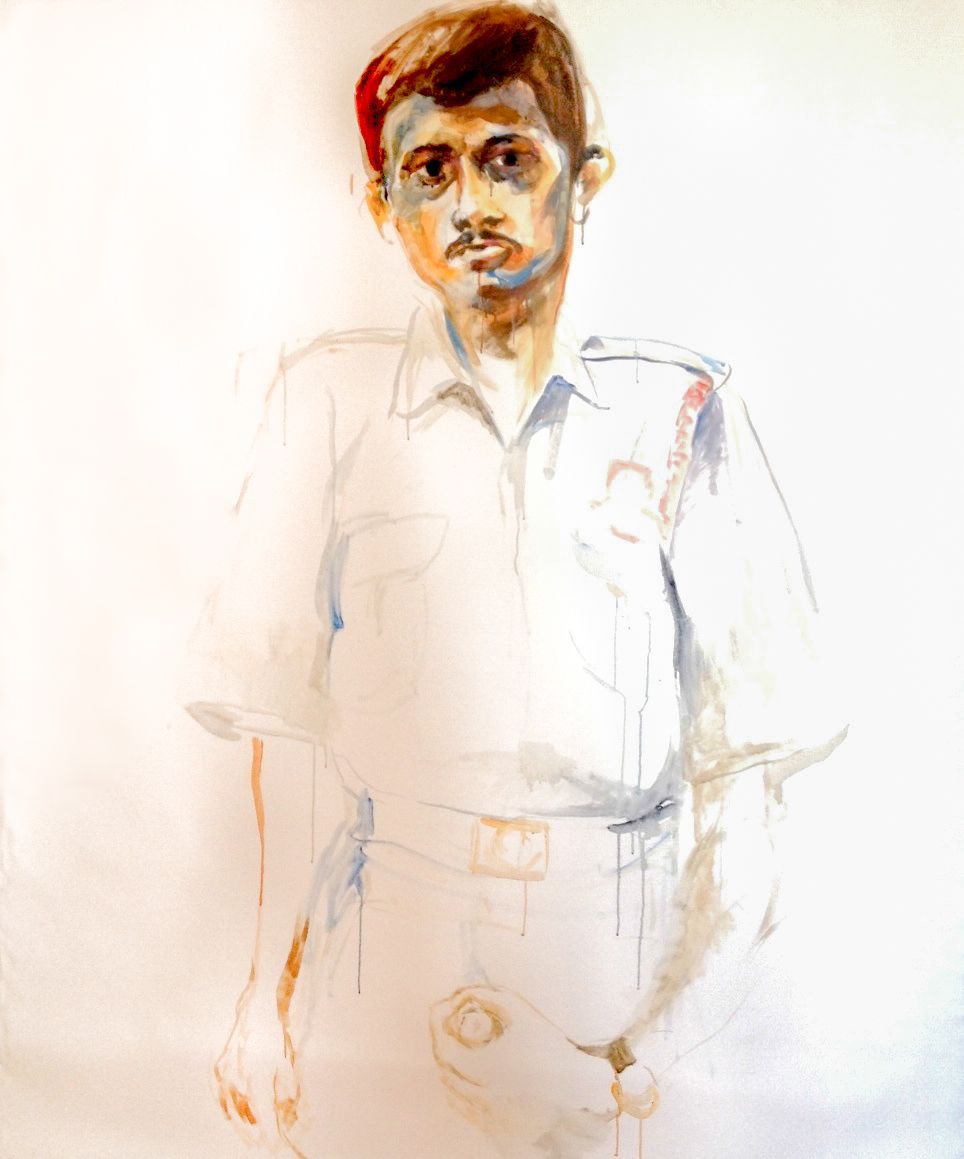Kaleidoscope
— 2013 —
The portraits are intended to be displayed in an installation. I would like to build a circus tent in which the visitor would enter. There it will be dark. They would walk on a path of diffused light. They would be guided to the center of the tent where a coin machine awaits. Whilst walking, the visitor would realize that they are treading on a moving image: a video of an Indian woman sweeping the floor. They would hear the repeated noise of broom scraping the floor.
The visitor finds himselves in the center of the room, in front of the coin machine. It is a similar machine that you find in Italian churches to illuminate paintings, avoiding constant lighting shining on them. Once the coin is inserted, bright light shines on the space. Ahead, on the right and left and behind – all around the tent, there are portraits of Indian men. They are staring and masturbating.
They are painted in American portrait composition and bigger than life size. There is no escape. The men represented are from every level of Indian society: street men, lawyers, policemen. The images are aggressively posted in front of the viewer.
There is no escape for any women from this staring in India – regardless of class, occupation or standing. From the poorest street sweeper to the wealthiest female foreigner. I lived in Indian for seven years and along with the testimony of my female friends, I attest to the staring, aggression and worse.
The series is called Kaleidoscope because it is a vision – a perspective of mine and it could change if the lens is turned.



